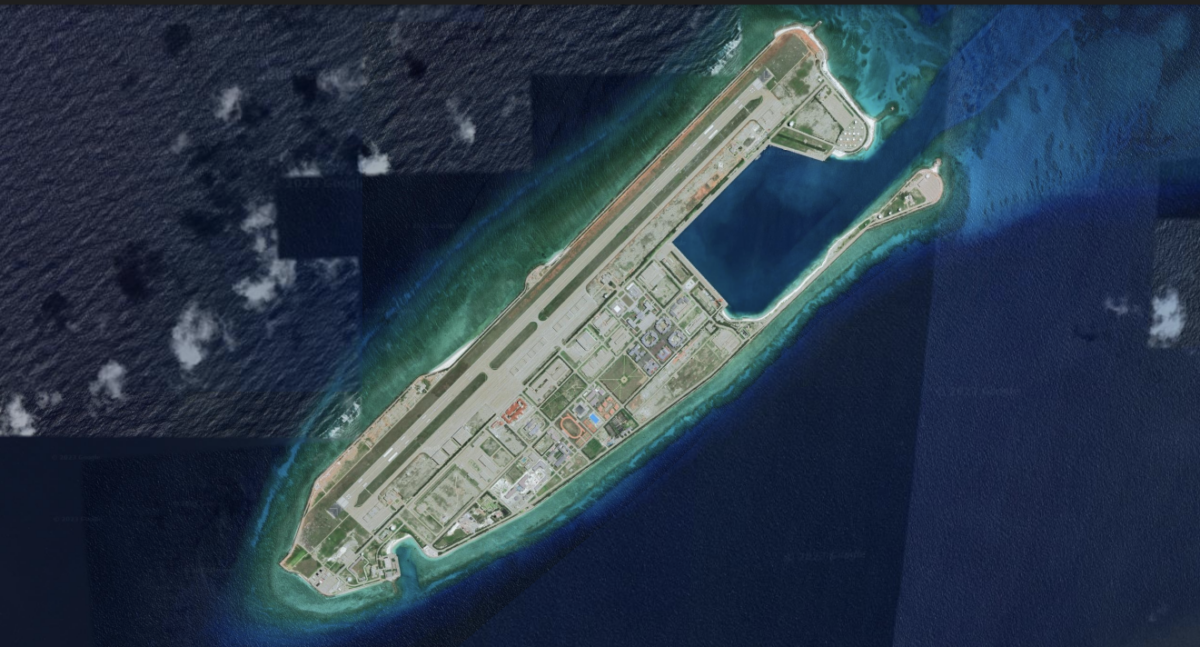Chinese belligerence in the South China Sea is not a new phenomenon, but provocations by the rising power have certainly accelerated over the past five years. While not full-fledged armed conflict, China has embraced the concept of gray-zone tactics, or coercive actions beyond political or economic activities, but just shy of armed conflict. Beijing has employed these tactics with the express purpose of extending its reach beyond its traditional territorial waters through a variety of legally dubious means, such as the dredging of man-made islands near the Spratly archipelago, swarming Chinese fishing vessels to lay claim to small atolls and outcrops in their neighbors’ backyard, and flying military aircraft dangerously close to foreign controlled airspace. These provocations are yet another side to the multi-faceted US-China competition that has heated up in the past few years. While smaller states may bear the brunt of Chinese aggression, it is the opportune time for the United States to bolster its allies and partners to set firm boundaries around the regional bully.
Tensions in the South China Sea had simmered for decades, but the gray zone conflict really began in April 2012 when Chinese and Philippine military vessels faced off over the fishing activities of Chinese civilian ships at the Scarborough Shoal in the Spratly Islands. This uneasy standoff ended in June of the same year with the Philippines pulling out of the area under the false pretense that China would do the same; instead, Chinese activity (both civilian and military) ramped up and by July there were reports of Filipino fishing vessels being chased off by the Chinese. Since 2012, Chinese presence in the region has dramatically increased under the guise of commercial fishing activity, but China’s island-building tells a different story. Between 2013 and 2015, China not only claimed the coral atolls of the Spratly archipelago as sovereign territory, but also conducted a major campaign to construct a handful of manmade islands. By dredging material from the ocean floor to build these small islands, Beijing seemingly cemented its territorial claim, one that is disputed by many countries in the region. This in turn has empowered Chinese militia who operate as fishing and survey ships, further muddying the distinction between military and civilian.
The territorial claim in the Spratly Islands, which is in the Philippines’ Exclusive Economic Zone (EEZ), has implications for not just the Philippines, but all countries who rely on the fishing industry in the rich waters of the South China Sea. Vietnam has had a few recent run-ins with China traversing their EEZ highlighted by a 2023 encroachment of a science research vessel escorted by militia and coast guard ships; Malaysia has had to deal with Chinese overflight of their airspace and Chinese military patrols of oil and gas operations as well. In 2022, new images revealed the total militarization of China’s manmade islands, with sprawling military complexes and full runways suitable for military aircraft. These “salami slicing” escalations chip away at non-Chinese sovereignty claims to traditional territorial waters and normalize Chinese encroachment in the region. As experts in the region put it, gray zone tactics add a layer of deniability, allowing China to brush away criticism with little legal recourse for victims.
When compared to China, the Southeast Asian countries have little recourse in fighting these claims, so the question becomes: does the United States have a role to play? The Philippines is the only treaty ally that is directly impacted by Chinese encroachment in the South China Sea, but Malaysia and Vietnam are friendly with the US and could benefit from a helping hand. The past three US administrations have shied away from direct military confrontation with China, but actions such as freedom of navigation operations (FONOP) are commonplace around Taiwan and increasingly utilized to bolster confidence in the Philippines’ EEZ. Of course, without blatant escalation of coercive tactics by China the United States is unlikely to directly intervene on behalf of any state with claims in the South China Sea; however, combined with the semiconductor limitations passed by Congress in 2021 and 2022, there are a handful of methods the United States can employ to corral China.
According to experts, one meaningful way Washington can contribute to cooling the South China Sea disputes is to utilize international partnerships like the QUAD to promote maritime domain awareness (MDA) initiatives with ASEAN member states. MDA initiatives can be a vessel through which the United States can provide technologies to promote the publication of Chinese transgressions such as satellite imagery and signals detection tools to track ships with inactive location transmitters. By looping in international organizations, countering China becomes a group effort with a multiplicative effect on each member’s contribution. Additionally, by publicizing China’s illegal activity, future breaches of the common trust are louder and will attract more attention in an area where Beijing has relied on deniability and handwaving to great effect. For a more direct approach, the United States and the Philippines have rejuvenated their close military cooperative partnership; while Washington has continued to conduct FONOPs through disputed areas, it would not be surprising to see a renewal of significant and permanent US Navy and Coast Guard presence housed at Subic Bay soon.
The latent territorial water conflict in the South China Sea presents a uniquely difficult challenge to US policymakers. Where there is no gun smoke, it does not make sense to send in the cavalry. However, with the smart utilization of partnerships and alliances in the Indo-Pacific, the United States has yet another front to approach challenging China’s rising power status.
Nicholas Davidson is MA student in the International Security program concentrating in Intelligence. He holds a BS in Political Science from Northern Arizona University. Having spent 8 years in South Korea, his research interests focus on East Asian security affairs. After graduation, he hopes to pursue a career in the federal government in a role supporting the security interests of the United States.




